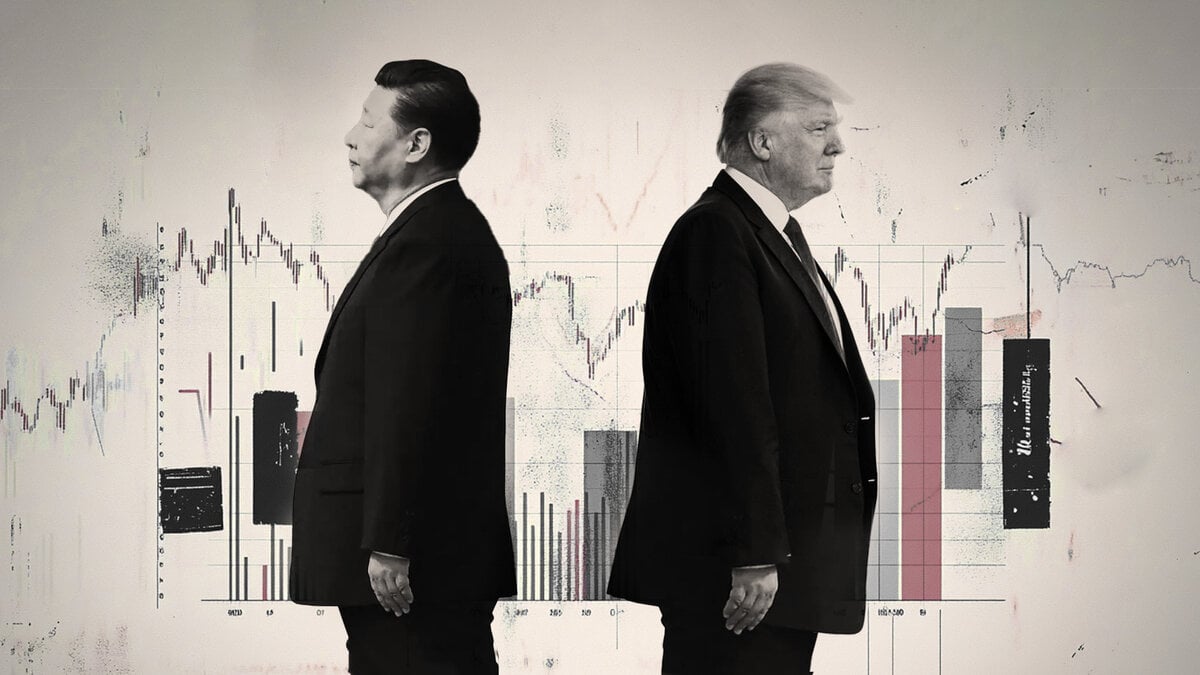US-China trade talks plus economic resilience: A market that looks through the chaos

Key points:
- Broader risks, but no panic – Political, policy, and institutional uncertainties are rising, but markets remain steady thanks to resilient economic data.
- Trade talks drag on – US-China discussions continue with fewer quick wins and deeper structural divides, but peak uncertainty appears behind us.
- Economic resilience keeps Fed in a wait-and-see mode – The FOMC is likely to stay on hold as growth holds firm, while speculation around Powell’s successor introduces fresh uncertainty.
As US-China trade talks in London extend into a second day, investors are looking for direction amid a swirl of competing headlines—continued tariff threats, the Trump-Musk breakup, and civil unrest in LA. Risks are broadening across multiple fronts, but markets are holding firm.
Why? Because the underlying economic picture remains solid. This macro resilience is giving the current administration room to maintain a tough negotiating stance, while also allowing investors to stay focused on fundamentals rather than short-term noise.
The risk spectrum is widening
President Trump continues to employ disruption as a strategy—on trade, technology, and corporate influence. While that has injected volatility at times, it’s part of a broader approach aimed at securing leverage and outcomes.
What we’re seeing now isn’t necessarily a loss of control—it’s risk dispersion across multiple dimensions:
- Policy uncertainty: Export controls, tariff rollbacks, and tech decoupling remain key watchpoints.
- Political noise: The Trump-Musk fallout may not move markets broadly, but it introduces stock-specific volatility—especially around TSLA and names linked to EV and AI policy themes.
- Institutional friction: Fed dynamics remain in focus, particularly after Trump's remarks on succession planning.
This doesn’t point to a single narrative—it creates both upside and downside risks, depending on how events unfold.
Trade talks continue, but no quick fixes ahead
Optimism lingers as US-China talks continue, but the era of easy wins—tariff pauses and minor concessions—is over. What’s left are deeper, more entrenched challenges: tech restrictions, rare earth supply chains, student visas, and national security-linked concerns. These are strategic disputes, unlikely to be resolved in a few rounds of meetings.
That said, trade uncertainty has clearly faded since the peak chaos of early April. Markets have become more selective, and trade no longer dominates price action the way it once did.
Investment implications
- Continued cooling in rhetoric could provide a more supportive backdrop for cyclicals, China-sensitive tech and semiconductor names.
- If trade tensions re-escalate or talks stall, defensive assets as well as non-U.S. assets may see renewed interest.
Economic data keeps the Fed patient
Friday’s jobs report underscored the Fed’s flexibility. Growth remains steady, the labor market is holding, and inflation is easing—giving policymakers space to remain on hold and watch for the impact of tariffs. Markets largely dismissed Trump’s renewed calls for a 100bp rate cut, with expectations now leaning toward less than two 25bp cut by year-end.
Investment implications
- Defensive sectors like healthcare and consumer staples could remain relevant in an environment where policy remains cautious and uncertainty lingers.
- Tech leadership may continue, as easing rate expectations support long-duration growth assets—particularly large-cap and AI-driven names.
- If inflation or policy surprises shift expectations, rate-sensitive areas—such as real estate and utilities—could face pressure.
- A weaker USD environment may offer tailwinds for commodities and international equities, while any rebound in the dollar could weigh on those exposures.
A shadow Fed chair?
More intriguing have been Trump’s remarks that he already has a name in mind to replace Chair Powell in May—and that an announcement may come “very soon.” That raises the possibility of a ‘shadow Chair’ dynamic, where Trump’s chosen successor begins shaping market expectations before officially taking over.
This scenario would likely challenge the traditional framework of Fed independence. If the new pick actively signals future policy preferences, markets may begin to look past Powell before his term is done.
Investment implications
- Watch for bond market sensitivity to any early signaling from the nominee, particularly if dovish.
- Short-end yields could be sensitive to shifts in future policy direction, while long-end would also be vulnerable due to questions around Fed independence.
- Gold may be the most neutral hedge, offering protection against both policy uncertainty and the potential erosion of Fed credibility.
What investors should watch
For now, markets are staying focused on what matters most:
- Solid macro data.
- Easing inflation.
- Diminishing trade volatility.
- A patient Fed.
That combination is enough to keep risk appetite intact and volatility subdued. The headlines haven’t disappeared—but their market-moving power is fading. As long as the fundamental backdrop holds, investors are choosing to look through the noise.
Read the original analysis: US-China trade talks plus economic resilience: A market that looks through the chaos
Author

Saxo Research Team
Saxo Bank
Saxo is an award-winning investment firm trusted by 1,200,000+ clients worldwide. Saxo provides the leading online trading platform connecting investors and traders to global financial markets.

















